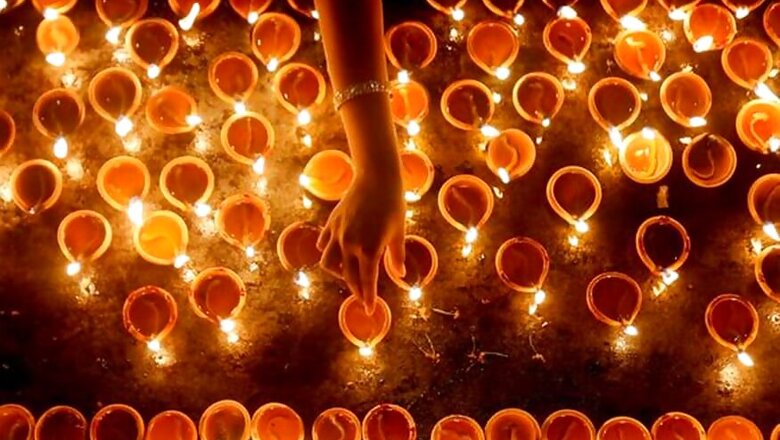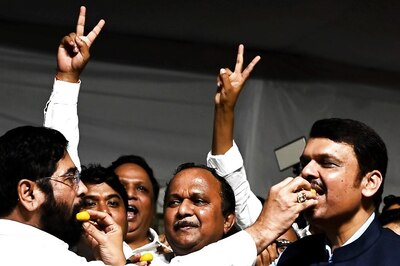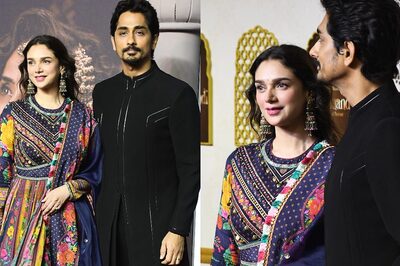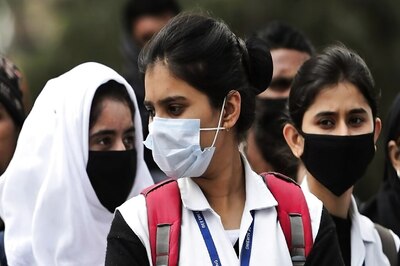
views
The desire for ‘identity’ and ‘development’ is the focal point of today’s politics, political discourse mobilisation. Whenever we talk about ‘aspiration of identity’, we emphasize the social and political identity. We are neither sensitive nor conscious about the role of ‘religion’ in the construction of 'identity’ in any social group.
When political parties build their agenda on the identity of Dalits, tribals and marginalized groups, or make an attempt to understand it, they don’t pay much attention to the religious feelings of these groups. While researching on Dalit and marginalized social groups, we have found that their 'desire of religious identity’ and ‘respect’ is coherently interwoven in their desire for social respect. For them, the meaning of respect is equal participation in religious space as well.
This desire of religious space is not a new phenomenon, it has been there since the realisation of untouchability by the marginal groups. Their relationship with freedom from untouchability has been closely associated with the desire of food and water, and equality in Hinduism.
Maybe, that is why BR Ambedkar started movements like the Mahad Satyagraha and temple entry. Many contemporary social movements and Arya Samaj have also spoken for movements like temple entry. In the same sequence, the entry of some untouchable SC and Dalits in a temple of Uttarakhand under the leadership of Tarun Vijay was seen.
Mahatma Gandhi had realized this and tried to carve respect for untouchables and Dalits in Hinduism. Another effort was made by Arya Samaj, as it constructed a religious identity of Dalits, marginalised and provided respect by associating them with Vedic culture.
The Aadi Hindu movement of Swami Achhootanand around 1920 was also another important effort to provide religious identity to Dalits. We must understand that such groups need religious space along with their daily bread. They have an urge for a religious space where they may be equals and experience spiritual relief to confront conflicts, struggles of their everyday life.
They also want to experience a brotherhood based on such equality which they easily find in everyday life. The Dalits and the marginalised need a religious space where they can pray to their gods for relief and cry. How unfortunate that we haven't even given them the space to cry.
For Marx, religion is the opium of the masses, but he has also admitted that religion is the distressed cry of the depressed heart. If you ever visit the Ravidas fare in Varanasi, you will find many people in queues with their eyes full of tears throwing coins and gold at the idol of Ravidas. Even the Dalit groups who have gained economically independence desire a religious space and respect. You will find NRIs along with poor people eating together onion-chapati in Ravidas’ fare.
Kabir Panth, Ravidas Panth, Shivanarayan Panth have emerged as religious spaces where marginalised communities get space for ‘plea of pain, desire for equality and social respect’.
Understanding this desire of Dalits, political leaders like Kashi Ram and Mayawati have worked rigorously on the politics of paying respect to Saints and Gurus of Dalit groups and to mobilise, organise Dalits around them.
They constructed idols of saints like Kabir and Ravidas and developed their 'memorials’. Maybe, this was not enough for the Dalit society — they needed more space. They aspire for temples of gods and goddesses of Hinduism.
Those who are economically better, need the freedom to visit religious sites and celebrate religious festivals in public space. Many of them have reinvented Buddhism as their religious space. Not only that, rural Dalits have the aspiration of freedom to worship their ancestral god/goddess. Earlier, they tried to fulfil their desire by installing and worshipping small idols on the mud platform (chaura) below peepal trees. Now, they are asserting more by constructing small temples in their hamlets.
As Dalit marginalised groups in villages become economically independent, they need grand temples. Maybe, the aspiration is expressed through the desire for their own ‘temple’ (mandir).
Jayapura, close to Varanasi, is the village that was adopted by Prime Minister Narendra Modi. In Jayapura, there is a separate hamlet of Musahar community named ‘Atalnagar’. On the entrance to this hamlet, close to a tree, a small temple has been constructed, in which, along with ‘Shiva’, the idol of ‘Mother Shabari’ (goddess of Musahar Community) has been placed.
The Musahar community has thought about a Mother Shabari temple for quite some time but they neither had the economic capacity nor social strength to construct a temple. Today, they are a happy group, after the construction of the temple. They assert with pride that there is no other temple of Mata Shabari in the 50-kilometre radius.
Similarly, the snake charmers community aspires to construct a temple of "Peer Goga", who is considered the God of snakes. As in the previous case, they do not have the socio-economic strength to realize their wish. They would demand it during the next elections.
There are many Dalit communities in Uttar Pradesh who have their own gods/ goddess. The construction of temples or religious sites attributed to them, not only instil a feeling of self-respect in them but also a pride of having their own religious space, where they can pray in their own way among their own people.
The Dusadh in Bihar are an important Dalit community. One will find temples of various gods and goddesses close to their settlements along with temples of Chuharmal, Sahle and Goreya Dev. I am not trying to say that there should be separate temples of gods of every Dalit community. I am trying to make a point that like other social groups, Dalit and marginalised have the aspiration of their own religious space and it is increasing in recent times. They need religious equality and temples to share their pain and misery. They also need the freedom to worship whichever god or goddess they want, within the fold of Hinduism.
Some need the temple of their ancestral god. Some are aspiring for different religious identities. Few want to live like Buddhists, while others want their identity as Ravidasi, Kabirpanthi and Shivanarayani.
Community gods are important signatures of their identities. For them, the "religious space" along with daily bread and livelihood is the essential for respectable life and identity, now we will have to understand that.
- As told to Eram Agha
(Badri Narayan is a Social Scientist at GB Pant Social Science Institute in Allahabad. Views are personal.)




















Comments
0 comment